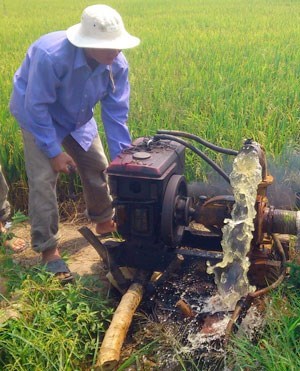Contact
ingmar.persson@slu.se, 018-671547

Arsenic is a carcinogenic toxin that occurs naturally in mineral deposits, soil and water in developing countries e.g. Burkina Faso, Cambodia and Vietnam.
Our research focuses on furthering our understanding of arsenic cycling and thereby we are aiming to develop mitigation strategies for reducing arsenic exposure to people.
Arsenic-enriched drinking water is a global problem and the situation is a particular problem in small scale wells in developing countries, where means for efficient arsenic removal are missing. The arsenic in the waters is  primarily from geological sources and increased water utilization increases the arsenic mobilization in ground water. Arsenic-enriched drinking water is a major health problem, and the limit for As concentration is set as low as 10 mg dm-3. Iron oxide based filters have shown to be very efficient to remove arsenic from drinking. Existing filters have been shown to be efficient but works primarily on a household level rather than a community level. The commercial material Granular Ferric Hydroxide or GFH® has been shown to efficiently remove arsenic from flowing water through a column making it possible to purify water from arsenic at municipal level with about 1 kg GFH® required to purify 5-50 m2 of drinking water, depending on initial arsenic concentration.
primarily from geological sources and increased water utilization increases the arsenic mobilization in ground water. Arsenic-enriched drinking water is a major health problem, and the limit for As concentration is set as low as 10 mg dm-3. Iron oxide based filters have shown to be very efficient to remove arsenic from drinking. Existing filters have been shown to be efficient but works primarily on a household level rather than a community level. The commercial material Granular Ferric Hydroxide or GFH® has been shown to efficiently remove arsenic from flowing water through a column making it possible to purify water from arsenic at municipal level with about 1 kg GFH® required to purify 5-50 m2 of drinking water, depending on initial arsenic concentration.
Financed by VR.
ingmar.persson@slu.se, 018-671547